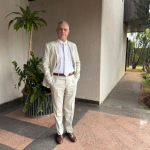In the heart of João Pessoa, a lavish mansion once served as the residence of a prominent social media influencer. Behind the gleaming façade and curated online presence, a darker reality unfolded. Former employees have come forward, shedding light on the daily operations and the environment within the mansion. Their testimonies reveal a stark contrast to the glamorous image portrayed online, offering a glimpse into the complexities of influencer culture and its impact on those involved.
The mansion, often showcased in meticulously crafted videos and photos, was more than just a backdrop for content creation. It functioned as a controlled environment where every aspect of the residents’ lives was monitored. From daily routines to personal interactions, the influencer maintained a strict oversight, dictating schedules and activities. This level of control extended beyond professional endeavors, influencing personal freedoms and choices, raising questions about autonomy and consent in such settings.
Former staff members describe an atmosphere where the line between professional collaboration and personal life became increasingly blurred. The influencer’s role transcended that of a mere content creator, evolving into a figure of authority and influence over the residents. This dynamic created a complex power structure, where the desire for exposure and opportunities in the digital realm intersected with personal boundaries and ethical considerations.
The daily life within the mansion was marked by a regimented schedule, with little room for spontaneity or personal expression. Residents were often engaged in content creation, rehearsing scripts, and participating in activities designed to generate online engagement. This constant cycle of production left little time for relaxation or personal reflection, leading to a sense of exhaustion and burnout among those involved.
Despite the outward appearance of success and luxury, the internal dynamics of the mansion painted a different picture. The pressure to maintain a flawless public image, coupled with the demands of constant content creation, took a toll on the mental and emotional well-being of the residents. The disparity between the curated online persona and the lived reality within the mansion highlights the challenges faced by individuals navigating the influencer industry.
As investigations into the practices within the mansion continue, questions arise about the ethical implications of such controlled environments. The testimonies of former employees serve as a catalyst for broader discussions about the responsibilities of influencers and the platforms that host their content. It underscores the need for transparency, accountability, and ethical standards in the digital age, ensuring that the pursuit of online fame does not come at the expense of personal well-being and autonomy.
The revelations from the mansion offer a sobering reminder of the complexities behind the scenes of influencer culture. While the allure of fame and success is often highlighted, the realities faced by those within this world are multifaceted and, at times, troubling. It calls for a reevaluation of the structures that support and sustain influencer careers, advocating for environments that prioritize the health, safety, and dignity of all individuals involved.
In conclusion, the story of the mansion serves as a cautionary tale about the hidden challenges of the influencer industry. It emphasizes the importance of ethical practices, respect for personal boundaries, and the need for systemic changes to protect individuals in such environments. As the digital landscape continues to evolve, it is imperative to foster a culture that values integrity and well-being alongside success and popularity.
Author: Vania Quimmer





